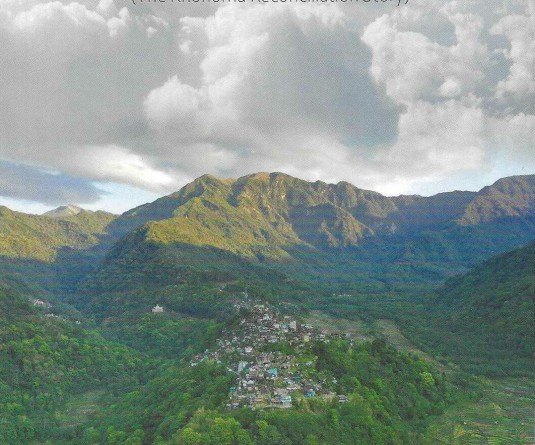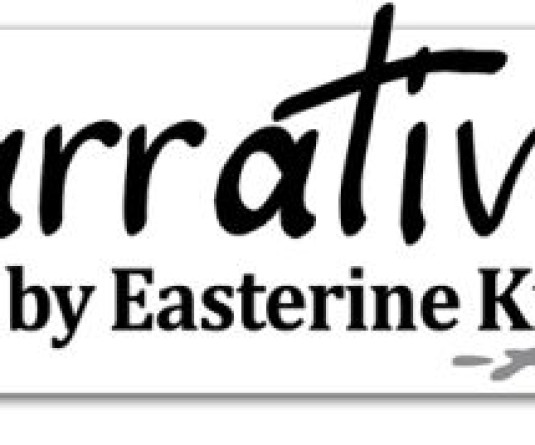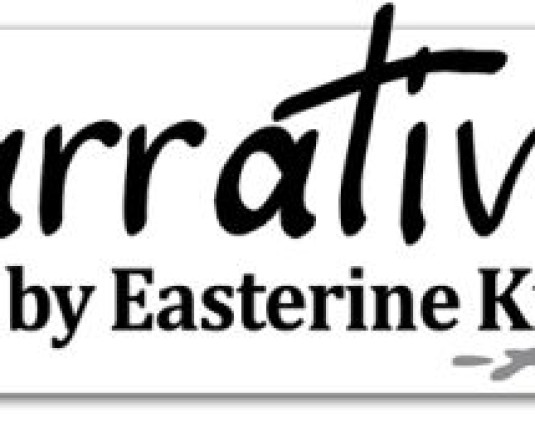
This land is heavy with stories
Stories waiting to be told
Stories waiting to be discovered
And stories that yearn to be listened to seriously.
I am the keeper of my culture, its most trustworthy curator.
Neikehenuo Mepfhüo.
The poem by Neikehenuo sets the tone for the anthology, ‘Homegrown’ and what to expect from it. She has a significant essay on the calamity of language loss. Editors Vizovono Elizabeth Chasie and Sentinaro, offer samples in this anthology, for each category of Naga literature. There are gems such as the writings of T Senka Ao, appearing in the fluid translations of Lanusenla Jamir, losing nothing of the flavour of the original, and introducing native words with ease. T Senka’s stories, ‘Sacred Langtem,’ and ‘On the Brink of a Pond,’ transmit Naga history in personal stories and preserve unwritten history in his story of the grandfather who served in France along with compatriots who knew no English or French. The cultural shock of illiterate Nagas who had to exchange wearing their Langtem, an item of cloth woven with great attention to cultural detail, for the rough, and uncomfortable khaki shorts, and be expected to serve in a war thus clad, is narrated with sensitivity and artistry. Reading these stories fills my heart with great hope for the future of Naga writing in English. They are rooted in our God-given cultures blest with originality.
Fiction, non-fiction, poems and academic essays are presented featuring known names and new names. It is a showcasing of Naga writing talent and what to expect from Nagaland in the near future.
An eloquent background to the beginnings of written literature, and the connect with oral literature in the form of songs that carry the land are found in the essays by Sentinaro and Elizabeth. They steer the focus of the book homeward to the homegrown literary pieces that the book is about.
There are no direct accounts of Naga nationalist writing, but our writing is never far from the all-consuming political life of our history as a people, and it is a theme that inevitably appears in Emisenla’s poem, ‘Sometimes,’ and partially in Richard Belho’s ‘Land of Paradox,’ a strong social commentary, and more prominently in Kethosher Kevichüsa’s essay, ‘Nagas and the anatomy of deeply divided societies’ – honest, soul searching - our Naga society divided almost beyond reconciliation by the conflict. The complexity in Lhutu Keyho’s story, ‘Sons and Fathers,’ where the son of a national worker joins the Indian army but is so conflicted by his choice, and kills himself, is our political predicament.
In her essays, Elizabeth Chasie traces our psychological problems to the reality of living in a conflict for the past seventy years, a struggle that Nagas are familiar with. Our literature seems destined to embrace this unpleasant self-knowledge at some point or other whether it is to achieve katharsis or find expression through artistic means. Anglo-centric Naga families – children losing language and culture via linguistic loss leading to identity conflict and cultural uprootedness - What stories are we telling about ourselves today? This question brings the reader back to the theme of Homegrown and the roots of Home.
There are two beautiful translations of folk songs. The first by Sophy Lasuh Kesiezie, the Thebvo making Song from Leshemi village. Her notes assert the wisdom of the women ‘transferring age-old secrets to their young ones.’
The other translation is by Ngutoli Y Swu - Leshele from Mishilimi village. Ngutoli’s notes add that the folk poem is ‘intonated poetry’ meaning it is ‘neither plain spoken words nor songs,’ and the songs are ‘the distinct dialect of the village. At present only a handful of people can recite and understand this kind of poetry.’
Our unwritten literature can be read in nature, literally, and the processes of life, and the importance of translators for preserving old texts, songs, poems and stories cannot be overemphasised, for in the Naga context they function multidimensionally as poem-song-story, carrying precious cultural information. We have work to do if we do not want to lose the treasures within these literary pots.
Two of the writers have drawn from the personal and written out of their life experiences with vulnerability. Kelhukiesie Savino writes on the experience of a father and son, of exchanging strengths, of experiencing a formerly strong parent aging and growing weak with the loss that begins with memory loss. Savino writes movingly about the dignity of personhood from personal experience.
Adenuo Shirat Luikham retrieves family history in her lovely story of Mrs Reverend who gives the first ever piano lessons to girls of Kohima village in the 1930s, and the lone student who persevered to the end.
Kemya Yanlem recently wrote for ‘Outlook,’ on the Oting tragedy. In ‘Homegrown,’ she gives us memorable lines: ‘Someone’s playing the harmonica from a tiny hut down the stream, and my heart’s beginning to feel heavy.’
Oting, our most recent AFSPA tragedy returns in at least three more poems, by Konaei Shongdok, by Chenonlo Aaron Woch, and by Longang Luklem.Oting will reappear down the ages in our shared memory bank, and these poems and articles are evidence of that.
There is no separate section on poetry but almost each contributor has sent in two or three poems. Not all are on serious themes. The following fragment from a poem by Jungshi Imti, for example, is endearing and fun:
I like the warmth, in people and places…
I like the smell of warmth,
It smells like old smoke,
The ground on a scorching summer evening,
Hay on a field at noon.
Tialila Kikon’s calls her poem on killing a mosquito, ‘Shadow boxing.’ However, her short story is far more serious as she bravely tackles a taboo subject.
Dorothy Chasie’s poems are painful, echoing what is on the hearts of many, and in prose she expresses the complications of young Nagas trying to live in the present time, struggling to preserve traditions that they do not fully understand - the lacunae between practice and life.
More than sufficient comic relief is provided Agnes Tepa and Sentilong Ozükum. Tepa writes about a child learning to exchange his bad tooth for a good tooth from the Naga tooth fairy. Agnes sketches a tender tale of a village childhood. Sentilong, on the other hand, engages the adult reader’s imagination with his suspense filled, edge of your seat tale, which effectively squeezes humour out of a very Naga family situation. Theyievino Whiso’s entry in this category is an ear farcical tale. Sometimes real-life situations can be funnier than stories that are concocted.
Kezhakielie Whiso’s story, about his hairdresser, is a beautiful human tale of friendship and parting in a world superseding religious differences.
Konaei Shongdok and Nzan Kikon were nominated to the Gordon Graham Prize for Naga Literature in 2022. Both writers are featured here with Konaei’s ‘This too shall Pass’ and Nzan’s ‘Meaning in an indifferent expanding cosmos.’
Love, life, longing, existential pain – these are the themes in the poems of the Naga poets featured in the anthology – Limatoshi Longkumer’s poems with a palpable uncertainty, Sentinaro with three poems of love and longing, Imlikokla Jamir with three questioning and confessional power poems, and Mhonlumo Kikon with metaphorically loaded poems from his poetry collection, ‘The Village Empire.’
Emilo Assumi’s poem, ‘A folklorist out of tune,’ deftly weaves in and out of past and present and intermingles the two.
Beni Sumer Yanthan has the standard three poems, but there is nothing standard about poetry at the hands of a sculptor of words, assured, sophisticated and urban and still, ineluctably fragile.
Chenonlo’s haiku, War, pulls Nagaland into the present with the reminder of wars taking place contemporaneously.
Vishü Rita Krocha’s continues the emphasis on present-day Nagaland with a story of Elections in the village, dividing the community and testing clan loyalties. After election fever has run through the village, the author remarks, ‘It surprised me. That everybody thinks it is the candidate’s prerogative to take care of the party worker’s family affairs.’ A very telling comment.
Avinuo Kire and Beni Yanthan have short stories in the anthology, Avinuo with her sweet, sad, heart tugging story of Longkhum, building on existing legends and adding new ones to it, while Beni brings to the table a story that ends with a twist in the manner of all good and adroit short stories.
T Keditsu, who recently released the beautifully illustrated ‘Ukepenuopfii,’ has two poems in ‘Homegrown’ with a beautiful early morning poem full of longing, ‘Aubade.’
Elongshila Jamir’s lines are unforgettable though she maintains the contrary in her poem, ‘Forgotten’:
they say all things are forgotten
but I am afraid
If it is old things that are forgotten.
Akumtong Longkumer closes the book with his brilliant essay on death expounding on apotia deaths and the paradox of a good death. He opens up the fascinating world of the dead, always a magnetic subject for Naga readers and writers.
‘Homegrown’ is a bold enterprise, and it surely deserves a wide audience.






